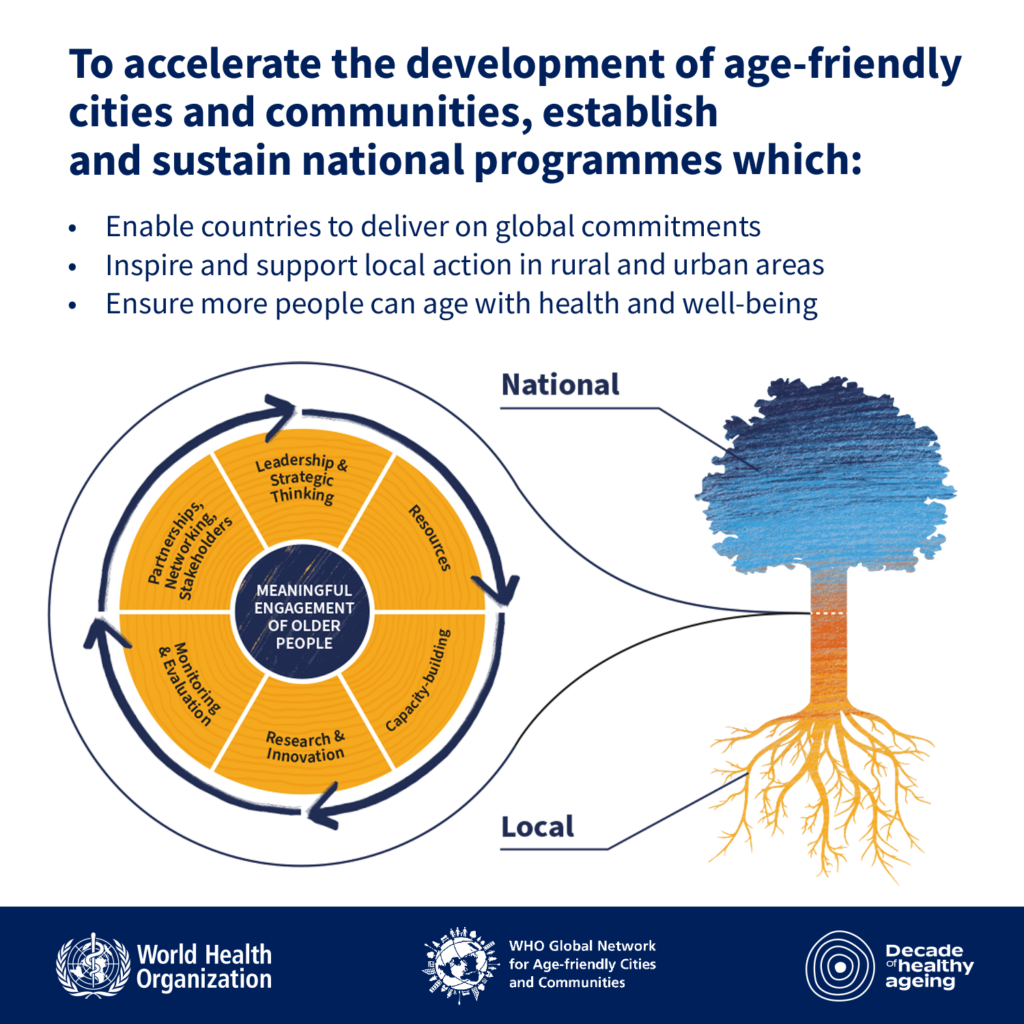
The global demographic landscape is undergoing a seismic shift, with an increasing proportion of the population entering their senior years. This demographic evolution presents a unique challenge and opportunity for the workforce. Recognising the potential of older employees, progressive organisations are investing in age-friendly workplaces, reaping strategic benefits from this inclusive approach. This article delves into the economic imperatives and tangible benefits of fostering age-friendly environments in the workplace, with insights from Sweden, Switzerland, Germany, the United Kingdom (UK), and the United States (US).
The Economic Imperative of an Aging Workforce
The World Health Organization (WHO) has projected that by 2050, nearly one-quarter of the global population will be aged 60 years or older [1]. In this context, creating age-friendly workplaces transcends moral responsibility, emerging as a strategic necessity. Such environments harness the potential of a skilled and experienced workforce, contributing to economic vitality and sustainability. Embracing age diversity is not just about social responsibility; it’s about unlocking the potential of a skilled and experienced workforce.
Understanding the Benefits in Selected Countries
Sweden
Sweden’s approach to age-friendly workplace policies serves as a benchmark. According to the Swedish Institute for Social Research, companies with inclusive practices experience higher levels of employee satisfaction, retention, and productivity [2]
Regarding age-related Human Resource Management (HRM) policies, demographic changes have led to challenges such as the sustainability of social security and healthcare systems and changes in labor productivity. Age-focused HR bundles are increasingly recognised for fostering older workers’ employability and motivation, impacting their work-retirement transition decisions.
These practices are seen as beneficial for managing an aging and more age-diverse workforce, and firm-level outcomes of these HRM practices include improved performance-related constructs like firm performance, employee productivity, and reduced turnover [3].
Switzerland
In Switzerland, the importance of age diversity in the workforce has become increasingly recognised, especially in light of demographic changes that have altered the age structure of many companies. This shift has highlighted both the opportunities and challenges presented by age diversity in the workplace. An exploratory empirical study focused on the practices used by companies to promote age diversity and inclusion, aiming to strengthen their competitiveness by actively managing age diversity.
This indicates a growing awareness and implementation of age diversity practices within Swiss organizations [4].
Germany
German firms have instituted targeted training programs for older workers to encourage them to remain employed beyond the traditional retirement age. This is particularly crucial in light of the declining birth rates and increasing longevity, which are leading to an aging and potentially shrinking labor force in Germany. For example, German women over 50, who are generally less financially secure than men, are more likely to improve their pay and delay retirement when such training is offered [5].
German women over 50 are more likely to improve their pay and delay retirement when employers offer training targeted at older workers.

United Kingdom
The Centre for Ageing Better in the UK emphasizes the competitive advantages that age-friendly employers gain in talent attraction and retention. The ageing population in the UK means older workers are an essential part of the workforce, now and in the future. However, only one in four employers are currently taking steps to create workplaces that support a multi-generational workforce. Persuading most employers to adopt age-inclusive policies and practices is achievable if approached correctly.
Only one in six employers were very likely to develop age-friendly policies in the next 12 months
Approximately half of the employers surveyed had diversity and inclusion policies that covered age, though these often encompassed multiple protected characteristics. However, only one in six employers were very likely to develop age-friendly policies in the next 12 months.
The perceived benefits of older workers in the workforce included increased knowledge and skills sharing, reduced staff turnover, and helping staff to work longer. Employers also valued older employees’ work ethic more highly than that of younger workers [6].
United States
The aging workforce phenomenon in the U.S. is significant, with nearly one in four American workers being 55 or older as of 2021. This demographic shift emphasises the importance of supporting and protecting the health and safety of older workers. Age-friendly work practices are crucial in this regard, not only for the well-being of older workers but also for the overall productivity and effectiveness of organisations [7].
Nearly one in four American workers is 55 or older as of 2021
A study conducted by Yixuan Li and colleagues from Purdue University analysed data from over 3,800 managers. They found that age diversity positively impacts performance, primarily through two mechanisms: increasing human capital (reflecting collective education, training, and experience) and social capital (representing connections and social ties).
These forms of capital resulted in better performance. The study also noted that age-inclusive management was key to leveraging the benefits of age diversity. In such inclusive environments, people of different ages can integrate well and feel connected, enhancing the value of age diversity [8].
The Tangible Benefits of Age-Friendly Workplaces
1. Enhanced Innovation and Problem-Solving
Age-diverse teams bring together a range of perspectives and experiences, fostering creativity and innovation.
2. Improved Employee Engagement
Older workers often bring a strong work ethic and commitment, contributing to higher levels of employee engagement and satisfaction.
3. Knowledge Transfer and Mentorship
An age-friendly workplace facilitates knowledge transfer between generations, creating opportunities for mentorship and skill development.
4. Reduced Turnover and Recruitment Costs
Organisations that prioritise age diversity benefit from lower turnover rates and reduced recruitment costs, as older workers tend to be more loyal and stable.
5. Enhanced Reputation and Employer Brand
Demonstrating a commitment to age diversity enhances an organisation’s reputation, making it an attractive employer for individuals of all ages.
Implementing Age-Friendly Practices:
1. Flexible Work Arrangements
Offering flexible schedules, part-time options, and telecommuting to accommodate the diverse needs of employees at different life stages.
2. Lifelong Learning Opportunities
Providing continuous learning and development programs to ensure that employees of all ages stay abreast of industry advancements.
3. Health and Wellness Initiatives
Investing in health promotion programs that cater to the well-being of employees, particularly addressing the unique health needs of older workers.
4. Inclusive Organisational Culture
Fostering a culture that values diversity, challenges age-related stereotypes, and promotes intergenerational collaboration.
5. Phased Retirement Options
Offering flexible retirement transition plans that allow employees to gradually reduce work hours while maintaining a sense of contribution.
The Junoverse Opinion
Investing in age-friendly workplaces is not just an ethical choice but a strategic imperative for organisations seeking long-term success. By embracing age diversity and creating inclusive environments, companies can unlock the full potential of their workforce, leading to enhanced innovation, employee satisfaction, and overall organisational resilience.
As populations continue to age, the benefits of such investments will become increasingly evident, positioning age-friendly employers as leaders in the evolving world of work. Get your organisation to the forefront of age-friendly employers by deploying tailored solutions such as Junoverse READY™. Contact us today to get started.
References:
[1] World Health Organization. (2022). Ageing and Health.
[4] University of Zurich. (2023). Age Diversity Practices in Companies in Switzerland.
[6] Centre for Ageing Better. (2022). Age-friendly employers: Influencing decision-makers.



